In the past i was very popular Twitch streamer but now i decided to focus on these blog. My recommendations are: Top 100 Video Games, Buy Dota 2 Boost, Best Gaming Blogs
Don't wanna be here? Send us removal request.
Photo
Omg neeko so cute

Cute Neeko: League of Legends game sketch drawing [Artist: DayClownCried]
2K notes
·
View notes
Text
Big Bash Boom Review: Stiff Wickets
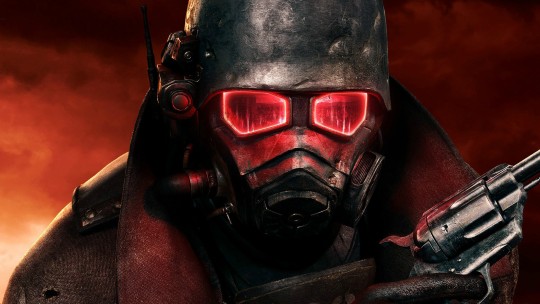
But using a litany of technical difficulties and no substantive tutorial that will assist you solve the fundamentals, Big Bash Boom feels as though it requires more time at the practice nets.
When leaping into a casual game, you can personalize match alternatives, team lineups, and chunk kind, which comprises a few fun types --pie, anyone? You are led out on the pitch and greeted with real world commentator Pete Lazer, although his sometimes magic reads come off as a succession of one-liners rather than true comment, and they start to grate after a few repetitions.
Out on the area is where Big Bash Boom shows off its most important differences to previous cricket matches, such as Ashes Cricket, that was by precisely the exact same programmer as Large Bash Boom. The activity was streamlined to cut a lot of the dead air time which you tend to become in a cricket game, which gives the game its arcade texture. You are never asked to select bowlers or pick lineups. You can if you desire, but the sport will otherwise create these forecasts to make sure a quicker stream. The players have NBA Jam-style huge heads, which shows the player likenesses in a means that is easy to love. Faces are comprehensive, if a small robotic and expressionless, but the general appearance works in context, particularly combined with the excellent usage of special effects to indicate huge shots.
Batting and bowling feel more pick-up-and-play than at almost any other cricket match nonetheless, the absence of a purposeful tutorial means things which ought to be obvious understanding, like exactly what the shifting cursor color on the pitch implies, stay a mystery until you just happen to work out it through the normal course of enjoying. But that apart, it is easy enough to enter a game and start slogging balls right and left, with time and shot choice all coming to play. Time it flawlessly, and you're likely going to allow it to float across the ropes, but get it wrong and you may pop up the ball for a simple grab or fold and miss completely. Bowling is a bit more complex, involving choosing a bowl kind to initiate the run in and subsequently keeping the cursor on the pitch set up when time your launch. Often it feels as if you are up against it as a bowler; there is little you can do in order to prevent being belted round the park aside from bowling the intermittent brief ball, and you are restricted to doing just one of these per over. Getting belted around each ball requires some getting used to, but mercifully in the event that you'd rather save yourself the humiliation, you can always mimic the innings.

Each displays a few excellent-looking cartoons and special effects, and you are going to find a little excess power for your upcoming few balls. Bowlers can bowl twice as quickly, fielders can operate at double their rate, and batters can induce slower throws in the outfield or reach twice as hard, sending loose chunks to the stratosphere. It is immensely satisfying.
All that you do in a game will make you coins which you could put towards purchasing new in-match parties, which you are motivated to do after hitting a large six or just taking a wicket. As soon as it's somewhat gratifying to rub it on your opponent's face, the shortage of gameplay advantages makes showboating feel somewhat random. You might even buy decorative customizations like fresh helmets and hats, but that is up to personalization goes; nonetheless, there is no player or group editor.
Past the superb unique motions along with vibrant aesthetic, the remaining part of the game struggles to conceal its pits, most especially in regards to animations. Fielders will proceed about awkwardly when pursuing the ball prior to sending and settling at the yield throw, while batters often turn into position before setting off for an extended jog. Additionally, there are a few more obtrusive bugs which, when they strike, can alter the results of a match. I have also had catches made at the outfield look like they do not count, together with my participant throwing the ball back to the keeper like nothing happened--something which may be hugely frustrating.
Big Bash Boom's capacity is apparent. Despite its impressive focus which makes it feel somewhat barebones compared to other cricket names, the change towards arcade gameplay seems totally suited to the comparatively gaudy demonstration of their BBL. Nonetheless, it's washed with germs which impact the center of the encounter, and these technical problems make it hard to warm to.
0 notes
Text
Just Cause 4 deep review
What is another oppressive dictatorship to show protagonist Rico Rodriguez? Not much. He does experience a new type of enemy in Only Cause 4, nevertheless: intense weather. It is the frequent thread which runs through the the narrative and new mechanisms and shirts off the volatile spectacle the show is famous for. And alongside new gadgets to ship objects (and individuals ) flying around the Earth, Just Cause has come to be a physics playground. Unfortunately, there simply are not enough chances to put those features to great use; underwhelming mission arrangement along with also a world slender on enticing actions makes Only Cause 4 per short-lived burst with untapped potential.
The very best and most common piece of Just Cause games would be in the forefront once more. An outstanding traversal system enables you to propel Rico across the gorgeous landscapes of Solis and easily soar through the heavens. Like previous matches, you build momentum and basically catapult yourself utilizing the mixture of those tools and hardly ever need to touch the floor. It is hard to comprehend how gratifying it would be to escape enemy hordes and hook on the bottom of a helicopter to hijack it and rip down them, or even slingshot yourself from harm's way toward another goal you will blow to pieces.
Rico is not only constructed to move quickly, but: if you are not causing explosions on a regular basis, you may do something wrong. Considering that the grappling hook may also be used to tether items collectively, you've got a great deal of chances to find creative out of exhausting your arsenal of guns --a few of which have their very own wacky practical software, such as the end cannon or lightning gun. Some weapons simply wreak havoc like the railgun or even burst-fire rocket launcher, as well as small tiny arms such as the SMG have impactful alternate fire modes.
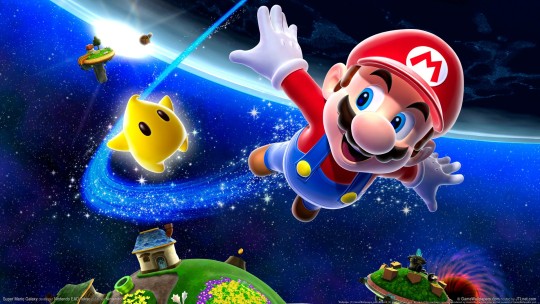
It is hard to comprehend how gratifying it would be to escape enemy hordes and hook on the bottom of a helicopter to hijack it and rip down them, or even slingshot yourself from harm's way toward another goal you will blow to pieces.
All 3 devices coincide with all the new engine. Air lifters (essentially miniature hot air balloons) allow you to launch items into the skies, and they may be further customized concerning speed, behaviour, and elevation. Retractors pull targets collectively , and boosters operate like jet engines that will send things into a speeding wave, if it be an assault helicopter or a bad enemy soldier. Numerous permutations of those contraptions are made possible, because their effects may be stacked into one tether and three loadout configurations allow you to switch between loadouts on the fly. These gadgets have been unlocked through side tasks, and you are given lots of paths to make them function as you need, which contributes to the most unsatisfactory part.
Mission construction is uninspired, since you're always requested to escort NPCs, shield a particular thing for a specified duration, trigger (or ruin ) inconspicuous generators, or even strike a range of games panels to trigger some kind of procedure. All these are connected with Region Strikes, which have to unlock lands on the map and advancement to main story assignments. While hammering through waves of enemies and their military-grade vehicles provides a few fantastic moments, you are frequently asking yourself: fine, what else? Shielded heavies, snipers perched from a mile off, and flocks of assault helicopters can come to be enjoyably overwhelming, because you've got to quickly use your varied toolset. But many missions are made in such a way that is strangely limiting, limiting the game's most powerful resources. Enemies simply swarm and behave as fundamental obstacles instead of clever challenges, which leaves you with goals that seldom bring out the very best from the mechanisms and methods of Just Cause 4.
In some time when open-world games occasionally overstay their welcome, Just Cause 4 is in the opposite end of the spectrum, in which you need there was to encounter since it's so much going for this.
There are a couple of stellar moments in the main story missions which produce proper use of this intense weather system that's the heart of Just Cause 4's premise. Particularly, the end into some stormchaser-themed questline funnels you via a range of conflicts as a tornado rips through your environment. 1 specific sequence can also be indicative of what the grappling hook mods are effective at; ruining huge end cannons that slow progress with boosters was not just the most effective method, but viewing those heaps of steel spin out of control proved to be a sight to behold. The final stand in this assignment, a succession of rooftop firefights amid the brutal weather, brings the most fantastic parts of the match together.
The exact same can not be said about another extreme weather conditions, nevertheless. But they are not game-changing from the manner tornadoes are because they have a minimum impact on gameplay. Even then, the questlines tied into those climate conditions and their individual biomes are over before you can fully experience their specific qualities.

All the time, a coherent narrative about a rebellion against the evil regime serves as the stage for Rico's crazy ride. Stories in Just Cause have not been more than explanations for ecological destruction and a means to make you feel comically strong, and the exact same holds true here, even although you will come across the ties to preceding entrances somewhat endearing. The harsh predictions are warranted by protagonist Oscar Espinoza's high-tech apparatus that control the weather and oppress the people of this fictional South American nation Solis. Rico stays the plausible one-man military with the abilities of a superhero with all the atmosphere of a grounded, unassuming protagonist. If there's anything that Just Cause does nicely story-wise, it is compelling you to take the absurdity of everything.
Through the game, you are going to be constructing a revolution around Solis, bolstering what is known as the Army of Chaos. It is a basic piece to advancement as well as the secret to taking down Espinoza and toppling The Dark Hand private army again. The Army of Chaos functions as an instrument to controlling lands throughout the map as you want to collect squad reinforcements to overtake regions, which additionally gates your capacity to undertake story assignments. Cause destruction and lift your insanity level, and receive squads to advance. It boils down to a numbers game, and after you realize the construction of the system, you may easily snowball squad amounts and command all Solis without needing to grind your insanity level. It is more things to do, plus they unlock the above grappling hook mods, but they are easy in character and are not sufficient to compensate for the shortcomings of different assignments.
Only Cause 4 has unbelievable moments where beauty and devastation cross with Rico's capacity to zip round the world in a minute's notice.
0 notes
Photo

Very charismatic and attractive drawing. But... What game is this?
1 note
·
View note
Photo

I would like to return to the time when we were playing medal of honor with my friends for all the night :)
1 note
·
View note
Text
I want to talk a bit about Mutant Year Zero
When you tap on the space bar to change from the real time exploration manner to the turn-based strategic mode, it is not considered triggering battle. You are not entering into conflict. Does not jump from the middle of the display.
Road to Eden is about utilizing stealth to completely scout dangers beforehand, then applying that understanding to maneuver the squad into place for the ideal ambush. Do your research and strategy well, and also you are able to take out your goal with them (or their cohorts) even understanding what's occurred. Proceed without warning and you are soon going to be bleeding out, your impatience badly penalized. Approached correctly, Mutant Year Zero is not a tough game; it is a tight, cohesive strategic masterclass that rewards the diligent participant.
Stalkers are shipped from the Ark, among the very few remaining hubs of human culture, to the Zone to scavenge for garbage and fend off the bandits, ghouls, feral dogs and much worse which occupy the destroyed suburbs and towns. Everybody, even people secure from the Ark, was touched by mutation.
At first glance, there is a whole lot you can do in order to customize every single stalker and gear up them to concentrate in some specific fields, permitting you to mix and match your team dependent on the job at hand. The restricted variety of weapons and utter expense of updates means you are forced to create tough choices. In the event you spend literally all of your weapon components on the close-quarters potency of Bormin's scattergun, or are you served enhancing the ranged effectiveness of Dux's crossbow? You can only afford one right now and again, because there's no potential for grinding, it might be some time until you are able to spend another.

On occasion the choices are simpler. Up against spiders? You are going to want a minumum of one stalker, likely two, using a successful EMP attack. Up against puppies? You are going to want a minumum of one stalker, likely two, together with crowd control skills to stop their melee rush. If you have completed your functioning properly, you will know what is coming and understand that which stalkers to swap out and in until you tap this spacebar. But do not tap that spacebar only yet. You are not quite prepared.
The Zone is split into a few of dozen maps networked across southern Sweden. They are not particularly big --larger than an XCOM map, but barely sprawling--and usually based on an identifiable attribute: a scrapyard, a college, a subway station, a quick food restaurant, etc. When you enter an area you are in pursuit mode and free to wander around in real time. When you see an enemy you are able to enter stealth mode by shifting your flashlight, thus slightly lowering your visibility but also significantly reducing the space where the enemy will place you. You are moving around in real time, only slower and much more subtly.
The pressure is ratcheted up through this pre-combat quest phase, as you are tip-toeing into hostile land, identifying the number of enemies await you, what forms they are, what amounts they are, whether they are patrolling, where these patrol paths require them, in which their eyesight levels intersect, and so forth. You have discovered a enemy's patrol route takes him from others. You struck F to divide your party and direct them into place. He is there now.
It is about the ambush. It is about assessing each situation from the exploration period and differentiating which enemies it is possible to remove, one by one, without alerting others. But pulling off a run of clean hits is not always possible. Inevitably something goes wrong--you will overlook that 75% likelihood shot you're counting or neglect to perform quite enough harm before the enemy reaches its turn and calls out for reinforcements--and suddenly the entire place is on awake and you are scrambling to improvise a new strategy.
The tactical battle engine borrows a good deal from Firaxis' resurrection of XCOM and provides as much depth along with a demonstration that guarantees all important data is clearly communicated in any way times. And you have to be educated, because the majority of the time--out of those strange simple skirmish that introduces a new component --there is an awful lot to consider. Afterwards, you will find high-HP tanks that will ram your pay, priests that will buff fellow enemies or send chain lightning strikes, giant puppies that will knock you over and maul you for numerous endings, but others have mind control abilities and much more. Tackling collections of enemies drawn from a number of those types can be enormously challenging, even once you've culled their amounts with a few critical early stealth takedowns.

Your' stalkers' health is going to be measured in only and low-double digits for much of the match, meaning that it only requires a few direct hits to place down them. These restricted resources echo the post-secondary topics of survival and scarcity whilst at the same time increasing moment-to-moment strategic considerations in battle.
Juggling all of the requirements of battle, from surveying the area ahead through to understanding how to best cancel every enemy type and develop a new strategy as everything goes horribly wrong, create an exceptionally satisfying tactical encounter. But as fun as the predefined experiences on offer within the class of Road into Eden's largely linear narrative are, it is still a linear narrative. On a brand new playthrough, the exact same map will still feature the very same enemies standing at exactly the very same areas or conducting exactly the identical patrol paths. Exterior of examining yourself against the toughest problem and a permadeath manner (presuming you do not opt for these very first time through) there is not a great deal of replay value available.
It is a shame, since the battle engine is indeed powerful I'd really like to keep on pitting myself from some type of randomly generated map after finishing the main narrative. Mutant Year Zero's smart concentrate on stealth and pre-combat prep reward your diligence, its own turn-based battle encounters are complicated, and they help strengthen its all-encompassing post-apocalyptic setting. It's a superb tactical battle campaign which you need ton't let creep past.
0 notes
Text
Valve’s Artifact Review of Mine
Taking advantage of numerous design components endemic to conventional trading card games and combining those with all the flexibility and simplicity of digitized play disciplines, Artifactprovides a uniquely persuasive twist into the TCG formula. The majority of this comes out of Valve's tentpole franchise of late night: Dota two . Artifact remixes a lot of the core thoughts, focusing on the principles of MOBAs to deliver new layers of strategic sophistication to good effect. Establishing a extensive variety of chances permits for near-limitless experimentation and growth of new and intricate styles of play.
Much like regular MOBAs, you will have three lanes which you talk about with your competition. All you may vie to get management of all three in series, beginning from left to right, marshaling what drives and forces you can to conquer your competition and topple the tower sitting in the end.
Essentially, the lanes behave like as different play areas, even though you can share a hand . Apart from that, though what occurs in 1 lane remains there. To win, you will either have to maintain two of the 3 lanes, or figure out how to bring off your foe's"early," which appears just after you have chosen a lane.
These principles are tacky to describe, but thankfully, pretty simple to grasp when you see them in action. By taking some of that excess grunt work from you, it frees the chance space beyond anything similar. Since any variety of monsters or personalities can be in every lane, it is possible you'll wind up with 10 battle rounds or more over three lanes at a turn. This seems like a great deal, but Artifact provides up conflict previews, detailing what's going to happen if you do not respond. Similarly, the playable cards on your hands will shine a blue, which means it is possible to save yourself time and think about the consequences of this drama rather than burning your ideas trying to determine what you can perform along with what impact it might have.

Between each, however, you will have an opportunity to get equipment and items to aid in the next go around. Each creep you just take down returns one golden, whereas the enemy hero returns five. Neither are necessary goals in themselves, however creeps and personalities protect the towers, therefore the majority of the time you will want to be chipping away at them anyhow, and the excess payout is a practical bonus which will--occasionally --influence which lane you decide to press and if.
In fact, there is a litany of all micro-decisions like people who Artifact relies to assemble itself into a fully fledged and incredibly nuanced trading card game. The fineries of drama may require quite some time to master, rather than since they're obtuse or especially convoluted, but due to the pressure between where, how, and should you decide to playwith. It is to your benefit, for example, to create one enormous push through one lane in case you don't think you are able to spread your drives efficiently enough to nab two. Buteven then, you will still need to have a competent defense to block your towers away from being overrun.
All this is covered in the tutorial, but creating a real sense of this game takes quite some time, simply on account of the character of its own play. Normally this is a positive attribute, and that studying nuances time is encouraged is that a helps produce a pleasing, growth-oriented manner of play.
Purchasing the game provides you with a beginning deck in addition to several booster packs to round out your beginning place. But out there, you will either have to exchange and market cards to the real-currency market to complete your own decks, or compete exceptionally well to acquire them. Competing would be OK, also, but the amount of games you want to acquire along with the benefits you get out you will find scant enough that many new players need to put in some additional money.
The fineries of drama will require a long time to learn, rather than since they're obtuse or especially convoluted, but due to the pressure between where, how, and should you decide to playwith.
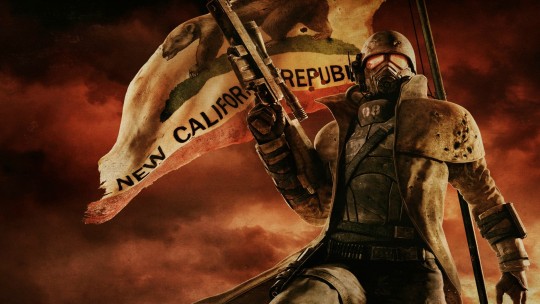
It was aided somewhat from the post-launch inclusion of a free draft style (formerly it was behind a paywall). Here you can play everything you need and experimentation with whatever cards appear at the draft. Players seeking to construct their real decks, however, could be let down. It is not clear, but in this stage, what programmer Valve will do regarding limiting card refunds to keep costs steady down the internet --or if there aren't any such programs in any way. It might be that in just two weeks' time, aggressive decks are radically cheaper to area. Since it is, Artifact is radically more affordable than high-end Magic or even Hearthstone, but it might feel less tempting to passive enthusiasts who wish to prevent any substantial financial investment.
In conclusion, however, Artifact works much more frequently than it does not. Though the volatility of this industry is 1 thing, play by itself is harder and engaging than most of its contemporaries. It is a good deal to keep tabs on, but it is put together well enough and propped up with sufficient card playability subtle and hints calculations which it rarely stops to delight.
Manufacturing and animation assist a fantastic chunk with this, also. Between lanes, however, you will have a fluttering imp that handles your deck, carrying it out effortlessly into another play areas between rounds. They do not impact play, just adding to the aesthetic presentation of this match as well as also the visual language of your deck and hands move throughout the board to every tiny stadium, but they are a wonderful touch.
It performs quite a little differently than any of its contemporaries--electronic or maybe not --and while the market is volatile to say the very least, there is very little proof that the pricing is straight-up predatory. Simply note, nevertheless, the sport isn't free-to-play and be ready to devote some extra bit of cash coming in. It would be wonderful to find some broader choices for people wanting to perform independently or at settings that are jazzy, but past this, Artifact is a fantastic showing.
0 notes
Text
Say hello to my new Earth Defense Force 5 Review!
Once it keeps lots of the recognizable tropes in the franchise--four player classes, a massive assortment of assignments, unlockable weapons and things, and obscenely dreadful in-game dialog that is so bad it is great --EDF 5 ratchets up everything to 11 and unexpectedly pulls off it. With bullet-hell design action and enormous, open battlefields where each building is destructible, it seems like there is no better time to get out there and rescue the planet from rampaging space pests as well as their alien masters.
As you emerge from the subterranean foundation the scale of this assault becomes evident, with you finally joining the EDF and climbing through the ranks to eventually become Earth's greatest hope for success. It is a pleasure, if average, assumption that performs throughout the cheesiest in-game dialog I have ever heard. It requires numerous difficult ends, culminating in one of the most eccentric and adventuresome boss fights conceivable. Seeing the narrative weave as it attempts to link the dots is like watching a slow motion trainwreck you can't take your eyes off from--it is so brash and absurd you can not help be it. Although the dialogue and narrative could have you gritting your teeth in the degree of cringe, the activity is something different completely.
Before getting out on the battle, you are given a selection of playing through every assignment with one of four different personality types, each with distinct play styles and their particular loadouts. The Ranger is your stock standard soldier kind and by far the simplest to use in direct battle, although the Wing Diver is quickly, great for close combat, and may fly herself from harmful conditions. As it's possible to play any assignments as any participant type, some decisions certainly made for a simpler time than many others. Selecting an Air Raidera personality who will ask long-lived cannon fire and automobile drops, for a undercover assignment is not the best use of its own abilities. However, the game will enable you to do it anyhow, thankfully allowing you to examine things out and work it out on your own. Loading times are fast, so in the event that you make a bad selection of loadout, it is only a fast jump back into the menu to alter this up prior to getting back on the market.
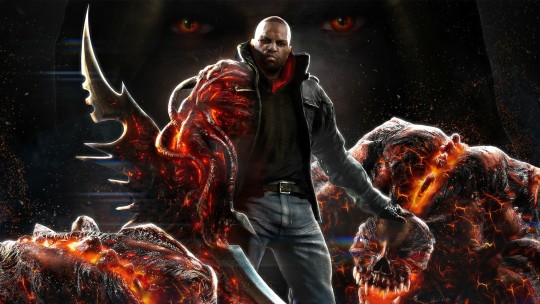
Assessing the alien hordes could be a totally overwhelming experience. The scale of what's imposing, particularly when confronted with a swarm of very mad bugs which are clawing and climbing not only themselves but flat buildings, factories, and houses to get in you. Calling at a bombing operate as a Air Raider will zoom out the camera to demonstrate a wide shot of the region, together with the sky lighting bright orange because the bombs rug the landing zone. Numerous vehicles such as tanks and armored suits could be predicted in or discovered scattered round, and though they can feel quite loose and unwieldy in the best of timesthey are a fantastic way to go from 1 side of this map into another or to put some distance between the horde.
Player movement also feels somewhat cluttered. Moving from a normal run to a dashboard feels more awkward than it needs to, as does overall running about. Happily, aiming feels tight and indestructible, therefore no matter if you are in tight distance or outside on a hill overlooking a wide-open beachside, battle always feels much more rewarding than not.
Replayability is invited through conflict. While the health pickups cure both you and your local AI allies--that you may figure out from the battle and amuse under your oversight --armor and weapon pickups both attest after the assignment is finished, providing you with access to new and updated weaponry and a greater foundation HP variety respectively. The difficulty level you perform will also affect your wages, with greater problems giving you more powerful weapons with greater base stats, inviting you to return to a higher difficulty level to grind better equipment.
Although offline and online campaign advancement is split, which means you will want to play the assignments twice to unlock and get them in every, blasting through aliens along with other people chooses the core gameplay to another level. My co-op spouse could not hit me to revive me instead resorted to destroying the tower, so bringing me down onto it I could subsequently be revived. Likewise a guided missile weapon that they had been using as a Ranger took on a completely new degree of lethality when coupled with my laser sight to direct them, raising its scope far beyond its usual capacity. Classes are balanced in order that they could helpfully support each other in special ways, which you just don't get in the single-player style where everything is placed directly onto your shoulders.
For all that is happening on display, together with bullets, missiles, debris and bodies flying every which way, you may anticipate EDF 5 to encounter framework drops sometimes. But once did operation slow to creep through a particularly busy scene between a mothership, a crumbling town, countless enemies and a rainstorm. A number of those grimier textures and character models provide it a dated appearance, though while it is not the best-looking match round, it's the headroom to deal with the sheer quantity of stuff happening around you with no severe performance hits when the action gets out of control.
Its enormous conflicts are a joy to watch play both from close and afar, along with the vast array of weapons and drama styles with every participant kind features lots of reason to return for more after the last bullet was fired.
1 note
·
View note
Text
A short review of game called “Ashen”
But, Ashen builds its identity by providing an experience that concentrates on developing a feeling of community and hope with people you meet. The weapon system may sometimes eliminate a few of the more tactical elements of this game's battle when playing solo, but Ashen still provides an unbelievable experience, no matter in the event that you play with yourself or with other people.
Every time a sudden explosion brings return to the property, allowing all to see clearly for the very first time in a long time, it arouses a hunt for the Ashen in hopes its recurrence will push the final vestiges of darkness off. From that point, you put out to the world seeking individuals to combine your new residence, in addition to a method of locating the Ashen.
Your trip takes you away from a quick travel point to another within an interconnected collection of open surroundings, and you will come across a varied range of enemies on the way. You will want to rush and leap your way through the majority of it in the beginning, however Ashen's controllers are rather tight and ledge captures make sure you recover the majority of the time. It never feels as if you are unfairly leaping to a passing over and over again, and releasing a fun fresh navigational ability halfway through the match will see you returning to older locales to look for secrets that you could not jump to earlier.

If you have played with a fantastic Souls-like game earlier, Ashen works just as you'd expect. The controllers generate a systematic strategy to battle that is enjoyable to simply lose yourself in.
In your travels, you're recruit characters and ship them straight back to Vagrant's Hurry to set up store, where you are able to socialize together for side quests and exclusive products. Many will also join you in your adventure when you depart camp, helping you in battle and reviving you in the event that you just happen to fall. They're also able to assist with exploration, also, as dungeon doors need two people to start and a few ledges can only be attained if a group boosts up each other. As more people join Vagrant's Rush and you finish more quests to them, your payoff will expand. You can not afford how Vagrant's Rush develops, sadly, but you will find interesting small nods to the quests that you experience. Vorsa conveys an outfit made up of the pelts in the critters you searched for her, by way of instance, and Eila constructs a pier so that you can ride down the local river at a cone --an action she talks of when you meet her. In a match where opponents are continuously respawning, it is incredibly satisfying to see your hard work really using a permanent effect on your corner of the planet.
You're able to forge relationships with others, also. Should you play with Ashen on the internet, you input a common world where it is possible to encounter folks. Other players will look as the NPCs you have chosen to Vagrant's Rest, and whether you decide to socialize with them is your decision. Without a voice conversation, actions specify a individual's personality, and this may form strong bonds that continue for the whole game. I attracted a computer-controlled Jokell with me each opportunity I had then, cheering for him if he did something unbelievable and falling everything to animate him when he dropped. It is a fairly simple case of transference in the office when all is done and said, but it is remarkably capable of generating hope (and I envision distrust in certain instances ) with all the figures you meet.
If working with other people is not really something, you can play offline with NPCs or utilize an early game thing which permits you to play totally solo. It surely ups Ashen's problem to play with no others and it generates a more customary Souls-like experience. However, the increased challenge of playing entirely by yourself is not worth dropping out to the misadventures that you end up in if traveling with a different character. Even in the event that you play offline using computer-controlled characters, you will still form bonds using a one or 2 of these, which enhances Ashen's whole experience. If you truly need that larger challenge, there is a mode that enhances your maximum health and endurance, and it is a far superior method of making the game tougher.

There's one unfortunate wrinkle which becomes evident when playing computer-controlled personalities, however, also it's to do with Ashen's firearms. Some axes utilize a jump vertical hammer animation that permit you to get the jump on your own enemy before they respond, but some have a flat slash that may more easily reach multiple targets, such as. This adds extra levels of struggle strategy aside from simply picking anything on your stock is most powerful. Problems arise if you are playing NPCs however, as you are not able to decide on which weapon that a computer-controlled personality brings into conflict. Not having the decision to select your spouse's weapon presents an unfortunate element of luck into a conflicts which need to be completely based on ability. It rarely occurs, but it is evident as it does.
Regardless of how you perform, boss battles are where the majority of your deaths are most likely going to come from, as every are fiveto 15-minute events that induce one to continuously adapt to the fly. No 2 bosses behave exactly the identical manner, and several have a gimmick that may alter the battle. As an instance, among those mid-game directors is a staff-wielding giant lady who uses her magic lantern to deliver strongest area-of-effect strikes and buff her wellness. If you place some space between the both of you, then you can lure her to throwing her lantern in the frustration and then ruin it. Doing this permits you to split bigger chunks of her health, but she moves to a savage frenzy and begins attacking you otherwise after her prized lantern is ruined. It is up to you whether you ruin the lantern, and if you will do it in case you opt to do so.
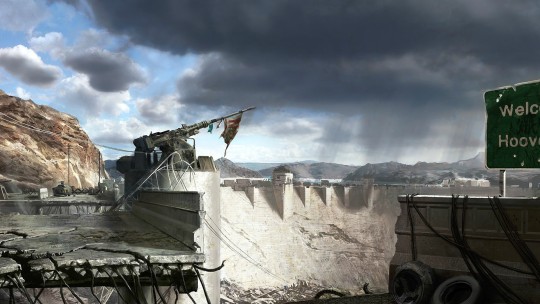
Sometimes, similar to this example, locating a boss' gimmick creates the battle a lot easier, but it may also only change the way that it plays out--that is an excellent thing for any battle you are fighting. Rather than feeling like you want to execute the exact same strategy again and again against each boss and simply do it better, you are sometimes rewarded for experimentation and trying something new. It will help dull any frustration which may arise from losing to the exact same foe, also.
Though its battle utilizes the exact same stamina-focused mechanics, the addition of qualities that promote a feeling of community using all the game's characters makes for a completely different experience. It is irritating to spawn and see your computer-controlled spouse has a weapon which does not match the one that you're using. But even if playing NPCs, your allies' attempts to help you in battle permit you to take care of the fates of this vibrant cast of people that you meet on your trip. The relationships you devise define your experience through Ashen, and assisting your new buddies is a strong motivator that pushes you forward through the match amazing world.
0 notes
Text
Desert Child Review - Burning Fuel
The game's unique appearance, chilled vibe, and robust idea make for a fantastic first impression, but sadly, by the end of this you will understand that there is not much more to Desert Child than what you have in these opening moments.
You play with a young guy who leaves Earth from the match's opening, trying to conquer Mars' speeder bike circuit and make enough cash to show himself in a coming championship. At the start of the game, you select between four weapons to get mounted onto front of your car or truck, each having another difficulty rating based on how beneficial they are. All races are one off and perform out on a 2D plane seen from a side-on standpoint, which can be a peculiar --but also a strangely enjoyable--method to compete. There are a small number of different monitors, all with particular challenges, and if you begin a race you're going to be thrown into one of these randomly. When there are barriers to prevent, winning comes down to with your increase effectively and shooting your weapon in TVs implanted around the trail. Every TV you choose out gives you a speed increase, and also to keep your highest possible rate you want to constantly destroy the televisions around the monitor before your competition does.
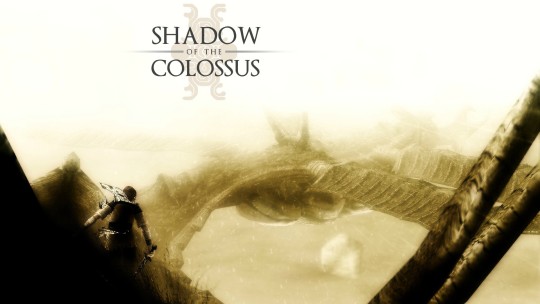
The first couple of times you race into Desert Child, it is thrilling. Your hoverbike controls nicely --it is floaty and quick but accurate --and hammering away at everything before you along with timing your fosters nicely is enjoyable. The game captures the inherent enthusiasm of hoverbike racing, but after it becomes evident that each and every race will be the same, that delight dulls considerably. You can not switch firearms mid-game, the paths all play quite similarly, and also the sole difference between competitions is the very last one from the sport is more challenging to conquer compared to others. I could not emphasize a uniquely cool second from some of those races that I participate in over two playthroughs of the game, or even a race in which the match showed off a new hint or thought.
You spend a lot of the game's brief running time drifting around a Martian town, researching and poking in its different shops, NPCs, along with the strange jobs it gives. There are just a couple of distinct surroundings for the unnamed protagonist to mosey throughout, and while they are lovely to check out the first couple of occasions, the game's little scale starts to feel restricting when you understand that the game universe never changes in any substantial manner. After every race or task that you take, the afternoon advances, and while some NPCs change around and save stocks alter, Mars quickly begins to feel small and static.

Your important purpose is to raise $10,000 to get a championship whilst keeping yourself hydrated, your bicycle in great working order, rather than bringing the legislation by taking on a lot of dodgy assignments in the nightlife area. The aim appears to be to catch some of the tedium of existence in this city --there is a good deal of walking about, seeing ramen shops, and shifting between odd tasks. A few of those jobs are enjoyable, but normally only for your first couple of times that you play them. By way of instance, you may act as a pizza delivery person, riding a bike through among the game's paths while shooting pizza boxes in people; you are able to herd kangaroos, which entails carrying out a group of these via a field and directing your hoverbike behind any slackers in order they don't lose from the bunch; you could input and intentionally drop a race to the local crime boss.
There are some distinct minigames such as this, but none of them actually offers something which feels just like a purposeful twist on the present racing (with the potential exclusion of the"hacking" minigame, where you are assaulted by drifting Windows logos and marble busts--I couldn't figure this out endeavor's success conditions). As soon as you've immediately seen everything Mars offers, and especially as soon as you've purchased the game's whole soundtrack in the record store (which is well worth doing, since the audio is good), there is nothing exciting to discover or unlock.

There are a whole lot of references in Desert Child which will strike harder with the Australian audience. There is a bridge specializing in the welfare program Centrelink, finish with a work board which you could get unique jobs from; the continuous casual profanity is quite Aussie; and you will find small nods to local cultural touchstones dotted around Mars.
Provided that your focus will change to saving for the championship, which boils down to rushing and finishing jobs over and above while keeping your earnings on your own bank to accrue interestrates. You get substantial sums of cash even in the event that you eliminate the first two races, which permits you to purchase all of your hoverbike's potential updates and also make things somewhat easier on your own. Winning the next race immediately finishes the match, though, narratively and automatically, it truly feels like things are only getting started.
Desert Child displays a range of smaller problems, also. At times the equipment I had put in my bicycle, like a laser sight for my own gun, arbitrarily would not work through a rush, and that I could never find out why there were TVs scattered around throughout the pizza delivery game with apparently no way to ruin them. Issues like this pop up around Desert Child, and while the majority of them are small, they add up.
When you flying across the water onto your bicycle shooting a shotgun blast that shatters many televisions before you, or any time you first begin to wrap your mind round the aesthetic of Mars, the match temporarily, however brightly, glows. However, Desert Child does not really hang together, and from the conclusion of its brief runtime what that looked exciting only an hour before have dropped most of the luster. This might be a wonderful proof of concept to get a larger game; since it stands, it is difficult not to get caught up considering everything it might have been.
0 notes
Quote
You can't go past Spider-Man's best stories without a good duality--the awkwardness of Peter Parker versus the confidence of his alter ego, the relatable humanity of his adversaries versus their heinous deeds, and the age-old ditty about juggling power and responsibility.
Gamespot
0 notes




